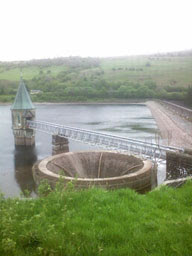 Architecture may have the glitz, but urban planning has the classic game. Now, SimCity get’s a makeover with the holiday 2007 release of SimCity Societies.
Architecture may have the glitz, but urban planning has the classic game. Now, SimCity get’s a makeover with the holiday 2007 release of SimCity Societies.
1Up has some of the details:
SimCity Societies PC Preview, SimCity Societies Preview
As someone who teaches an introduction to urban planning using games, I’m quite familiar with the opportunities and hazards of teaching with SimCity. The biggest issue, as my students can tell you, is that the basis of planning is found in the public’s interest in private property. No public, to planning. No private property, no planning–at least not what we mean by urban planning.
SimCity, lacking a notion of private property, works more like a Stalinist simulation, whereby the people simply suffer under the rule of an all-powerful dictator. In SimCity there is simply no significant consequence to razing blocks of homes to make way for a new football stadium. Try that in your town and see what happens.
Will Societies fix any of these problems. From what we know how, it doesn’t seem so. And that may be due to the fact that community participation, public hearings and due process just don’t seem like enjoyable play mechanics.
What is most peculiar about the new game, from the descriptions, is an implementation of something called “environmental determinism.” In practice, this is a whole raft of beliefs around the idea (and I am trivializing here to just make a clear point), that if you use lots of soothing green colors in a building people will be more relaxed.
The new game uses some form of this in the guise of “social energies”. These spirits inhabit your buildings and shape it, say, from a more totalitarian shape into a bright, happy artistic place.
We’ll see how that pays out, but it might turn SimCity further away from anything useful in terms of understanding cities.
One thing I am looking forward to are whimsicle sets of buildings that let you style your urban places more in the tone of The Nightmre Before Christmas than New York City. It might seem silly on the surface. But if you’ve been to Walt Disney World, you will see just how powerful a city built on fantasy can be.
Powered by ScribeFire.

 Architecture may have the glitz, but urban planning has the classic game. Now, SimCity get’s a makeover with the holiday 2007 release of SimCity Societies.
Architecture may have the glitz, but urban planning has the classic game. Now, SimCity get’s a makeover with the holiday 2007 release of SimCity Societies.
